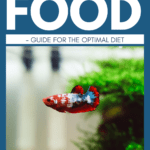Did you know that your betta fish’s spectacular colors are strongly influenced by the diet that you feed him? Well, research proves that!
Your betta’s health is also closely tied to his feeding regimen. So, what do betta fish eat, and what’s the best food for betta fish?
In this guide, we give you all the information that you need about feeding your betta buddy to ensure that he thrives and keeps the stunning coloration that you love so much.
Quick Comparisons of the 6 Best Betta Foods
| IMAGE | BRAND | DETAILS | |
|---|---|---|---|
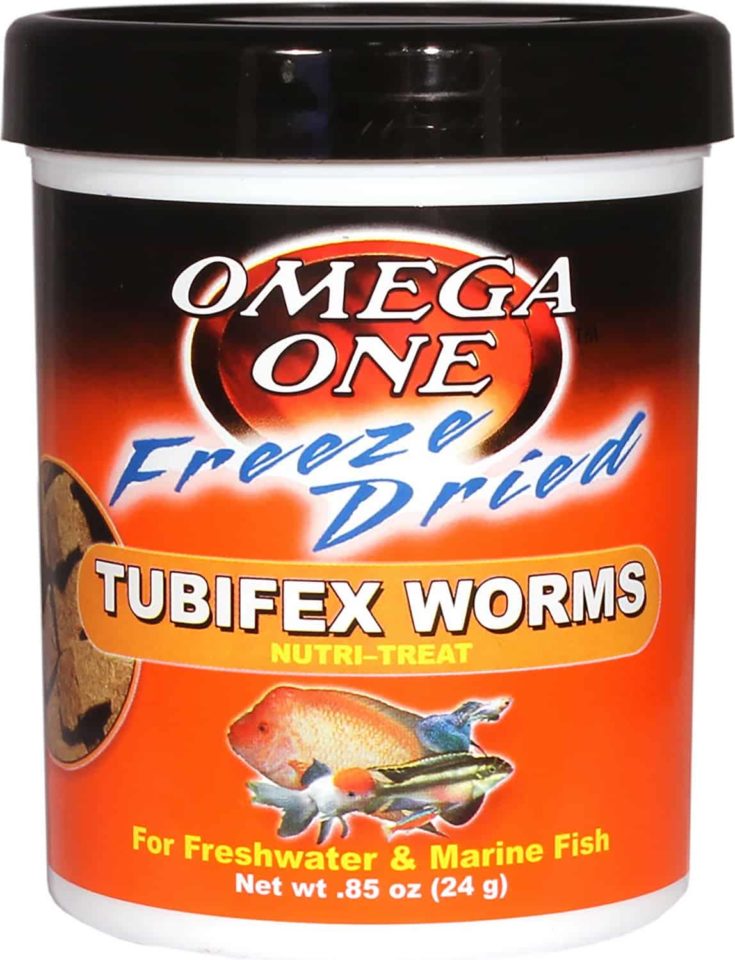 | Omega One Freeze-Dried Tubifex Worms Freshwater & Marine Fish Treat |
| View Product |
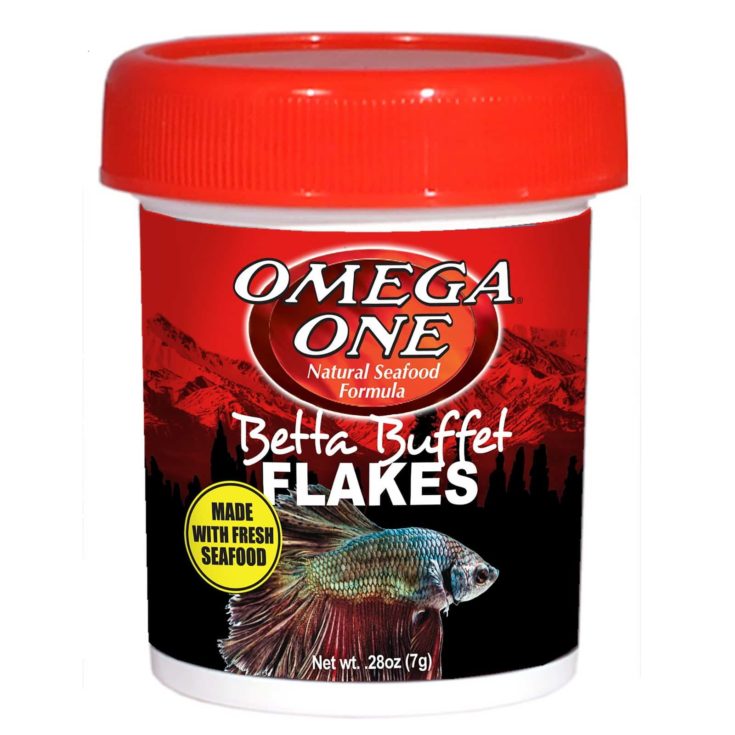 | Omega One Betta Buffet Flakes |
| View Product |
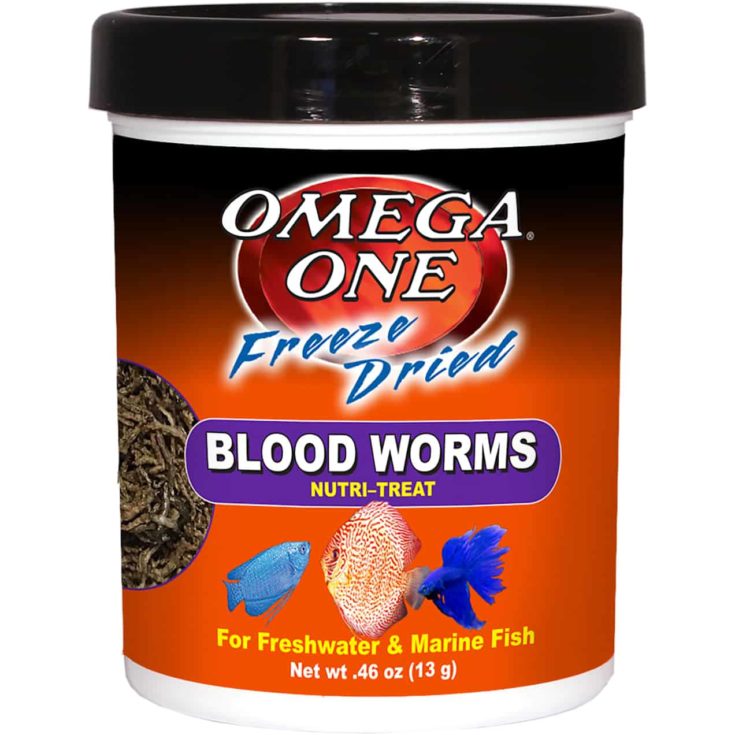 | Omega One Freeze-Dried Bloodworms |
| View on ChewyView on Petco |
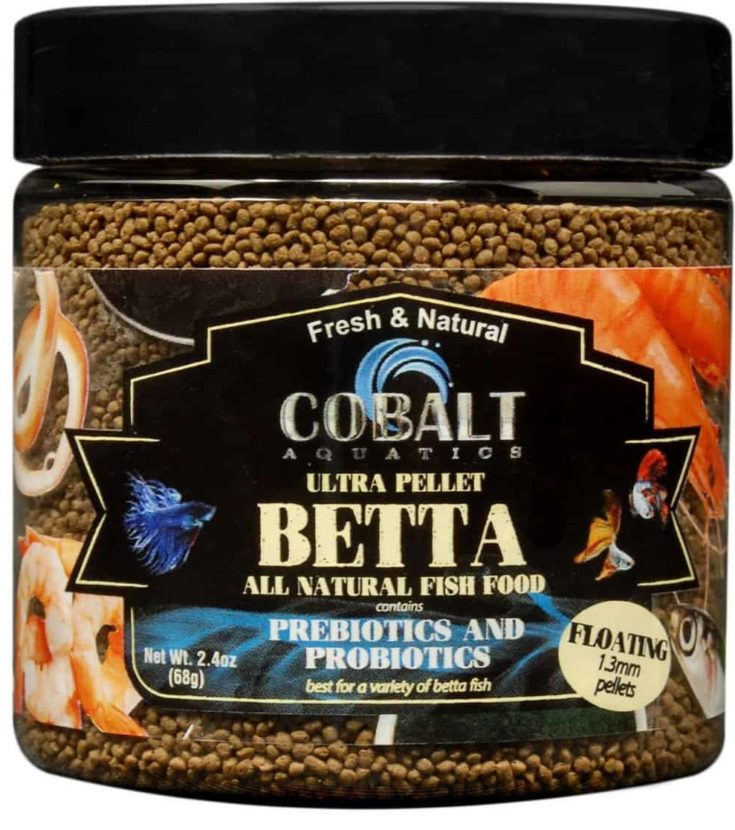 | Cobalt Pellets Floating Betta Fish Food |
| View Product |
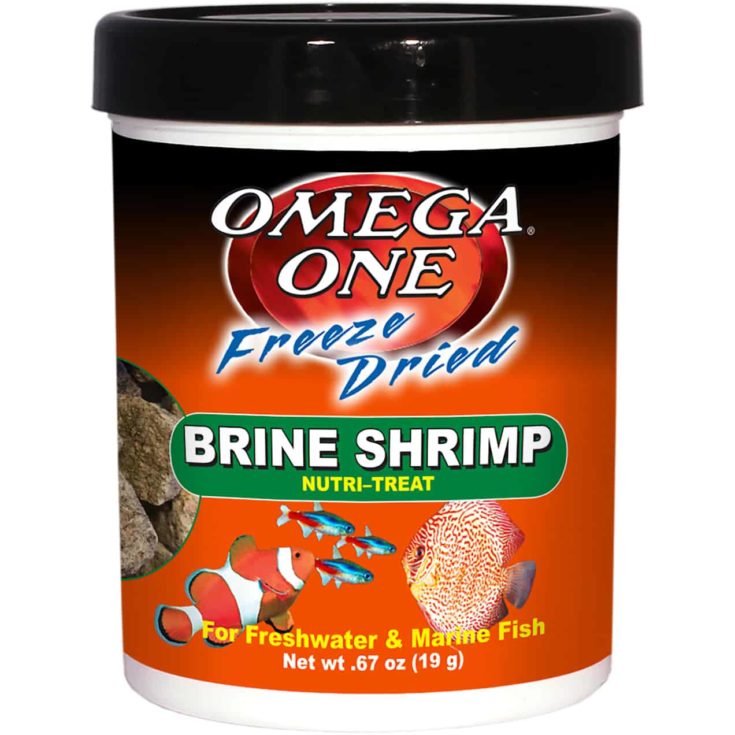 | Omega One Freeze-Dried Brine Shrimp Freshwater & Marine Fish Treat |
| View on ChewyView on Petco |
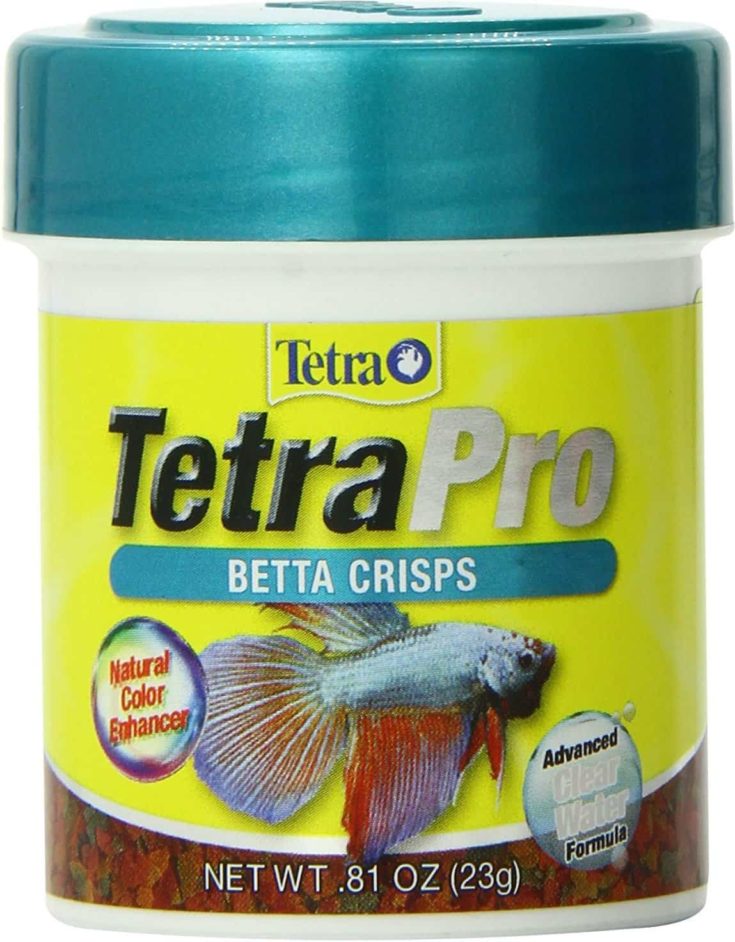 | Tetra TetraPro Betta Crisps |
| View Product |
Betta Fish Diet
In their wild environment, betta fish are omnivores, eating a varied diet that includes mainly insect larvae, water-bound insects, and a small amount of plant matter.
So, tank-kept bettas need more meaty foods in their diet than veggies, and that’s for a very good reason. If your betta’s diet is correctly balanced, he is much less likely to experience health problems such as bloat, constipation, and dropsy, which are often associated with incorrect feeding.
For that reason, always check the list of ingredients in whatever flake or pellet food you buy to make sure that the first few constituents are meat-based, and the total protein content is at least 40%, or preferably greater.
What’s a Balanced Diet For a Betta Fish?
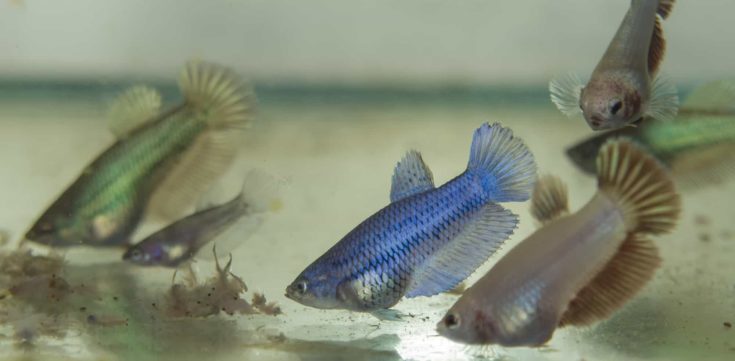
To keep your betta healthy, brightly colored, and thriving, his diet should include:
- Protein
- Fiber
- Fat
- Carbohydrate
- Calcium
- Phosphorous
- Vitamins D3, A, E, K, C, M, H, B1, B2, B3, B5, B6, B12,
Ideally, the food should have meat-based protein listed as the first ingredient on the list shown on the product container.
How To Read Fish Food Labels
Betta fish need a healthy balanced diet that contains both plant-based and meaty foods.
Buying fish food is something of a lottery, as every brand claims to provide the optimum diet for your fish, and every manufacturer claims to include only the very best ingredients in their food. That’s why it’s so important that you know how to interpret fish food labels.

Take a look at the label on the pack of food and look at the list of ingredients. If the food packet or box doesn’t have a list of ingredients, don’t buy it. Some of the cheaper foods offered don’t actually tell you what they contain and should be avoided.
The ingredients at the top of the list are listed in order of the weight of that constituent that the food contains. So, you want protein at the top of the list, and that should be some kind of fish derivative, for example, bloodworms, shrimp, or fish. The percentage of that constituent should also be shown. For example, 43% protein is ideal.
A big no-no are fillers, such as rice meal and wheat flour. If those ingredients appear high up on the list, look elsewhere for your betta food. Cheap padding ingredients like these are used to add bulk to the food and make up the weight and contain very little nutritional value. That way, the manufacturer can produce a food that’s marketed as a premium product very cheaply.
Look carefully at the label to see what’s said about preservatives or additives. Ideally, you want to see minimal amounts of additives, color enhancers etc.
Surface Feeding
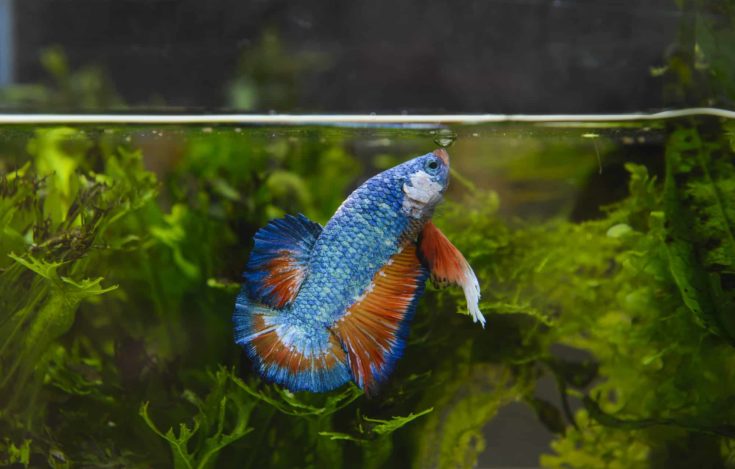
Take a close look at your betta fish, and you’ll see that his mouth is slightly upturned. That’s because the betta is primarily a surface feeder, lurking beneath the water. When an insect settles on the surface or becomes waterlogged and trapped there, the betta grabs the hapless insect, and lunch is served!
When buying pellet food, always check that the product is designed for surface feeders.
If you offer your betta food that sinks quickly, most of it will disappear into the middle to bottom of the water column, where other fish will eat it, leaving your poor betta to go hungry. If your betta is the only tank occupant, the uneaten food will decompose in the substrate, potentially contaminating the water and adding the workload for your biological filter.
When choosing a betta tank, always pick one that has a maximum surface area for your surface-feeding fish.
Types of Betta Fish Food
Variation in their diet is extremely important for betta fish.
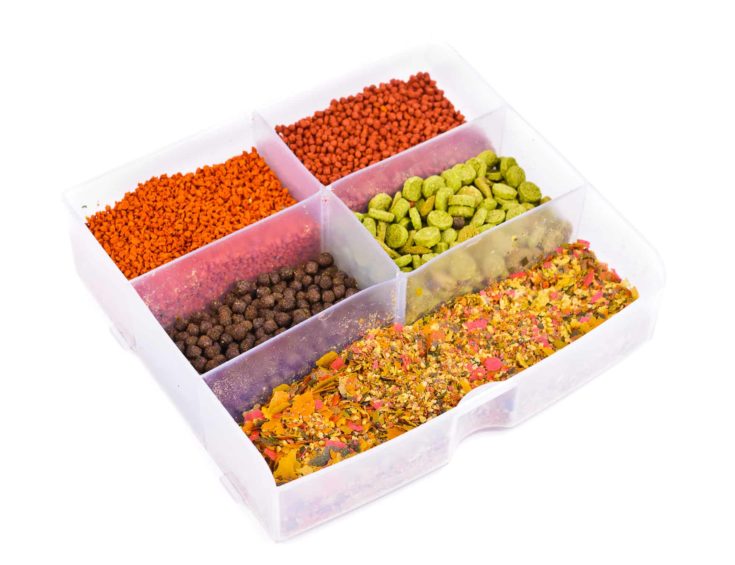
Here’s why.
Although regular tropical fish flakes will most likely fulfill the needs of most community fish species, flakes won’t contain all the nutritional requirements of your betta’s diet. So, including a variety of foods in the diet is critical for your fish’s health.
In my experience, bettas can be picky feeders, and they do become bored if offered the same food every day. Therefore, mixing things up is a great way of keeping your fishy friend interested in his dinner and avoiding expensive, messy waste.
How Much and How Often?
Feed your fish only as much as he will eat in a minute or two.
Ideally, you should feed your betta once or twice a day for six days of the week. On the seventh day, don’t feed your fish. A fasting day is important, as it allows the betta’s digestive system to empty itself before adding more food. That helps to prevent bloat and constipation.
Avoid Fillers!
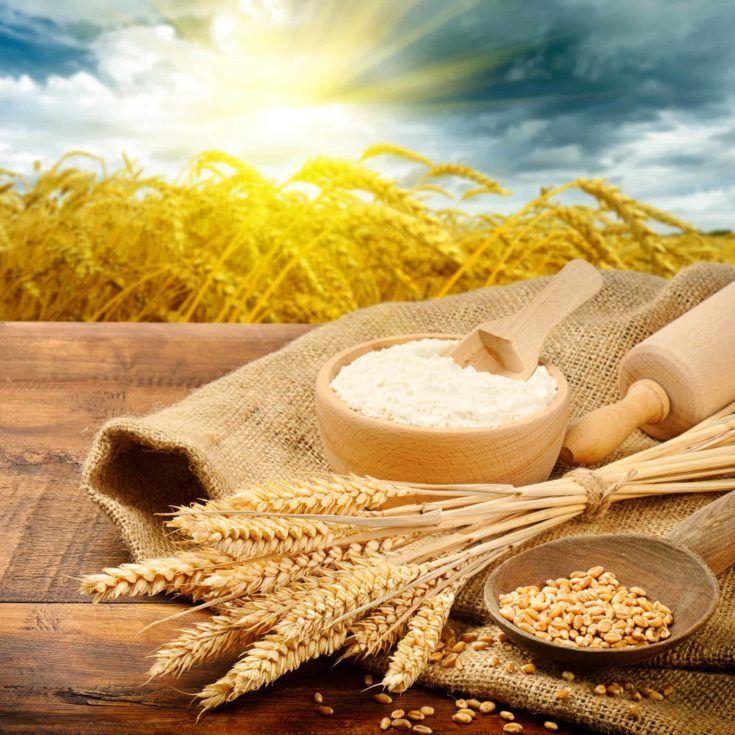
The betta fish has a very short digestive tract. That means that your betta is unable to process bulky filler products, such as corn and wheat. Many cheap fish foods contain a high percentage of fillers, which will cause constipation, bloat, and other digestive problems for your betta.
Bottom line; fillers have no nutritional value, and you should avoid fish foods that contain high levels of these padding products.
What About Goldfish Food?
Never feed your betta fish flakes or goldfish foods that are not betta-specific. These foods are not nutritionally balanced for a betta’s dietary needs and could cause health problems for your pet.
Flakes
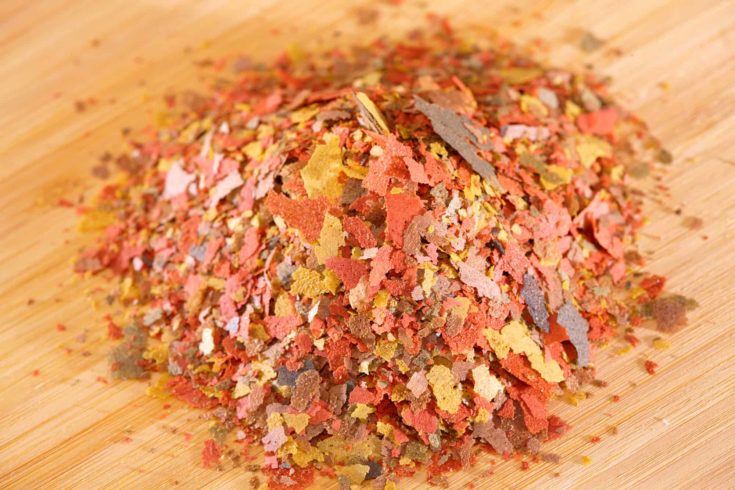
Flake fish food is easy to store and can provide your betta with a good source of nutrition, provided that you choose a product that’s specifically formulated for bettas.
Feed only enough flake to be consumed within a minute or two to avoid overfeeding.
Pellets
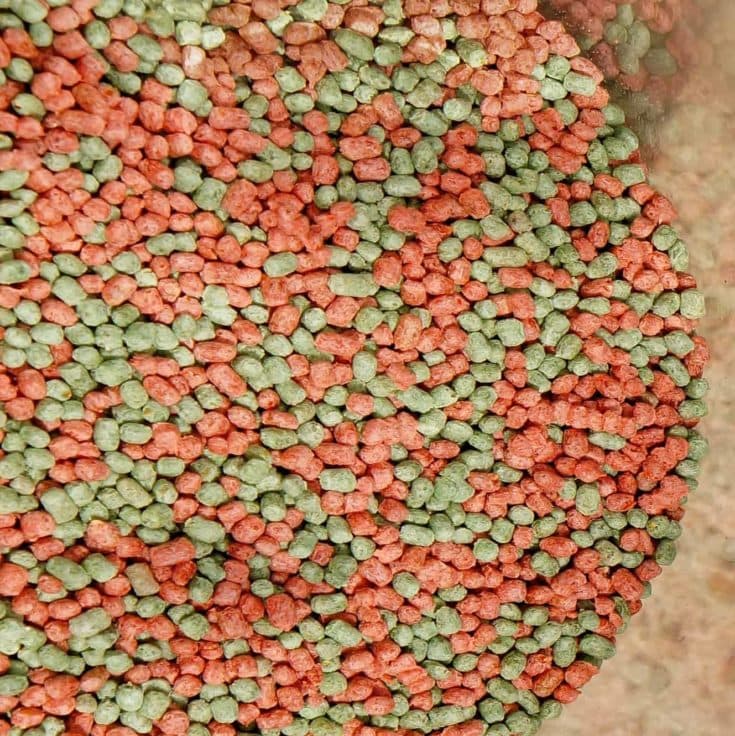
Betta fish pellets are a cost-effective, convenient food source for bettas. Check that the product is betta-specific and that the pellets will float on the water surface.
Remember that pellets expand when wet, and that can cause bloating when the pellets swell in the betta’s stomach. Soak the pellets in a little tank water to hydrate them before feeding them to your fish.
Freeze-dried Food
Freeze-dried foods are made from live foods, such as bloodworms and brine shrimp. The moisture is stripped from the food, and fillers are added to ensure the product’s stability.
I recommend that you soak all freeze-dried foods in tank water before feeding to increase the moisture content and prevent your betta from becoming bloated. Give your fish freeze-dried food a couple of times each week as a treat.
Live Food
Offering your betta fish live food can be a great way of creating added interest at feeding times, as well as replicating your fishy friend’s natural behavior. The inclusion of live food in the diet can also help to prevent constipation.
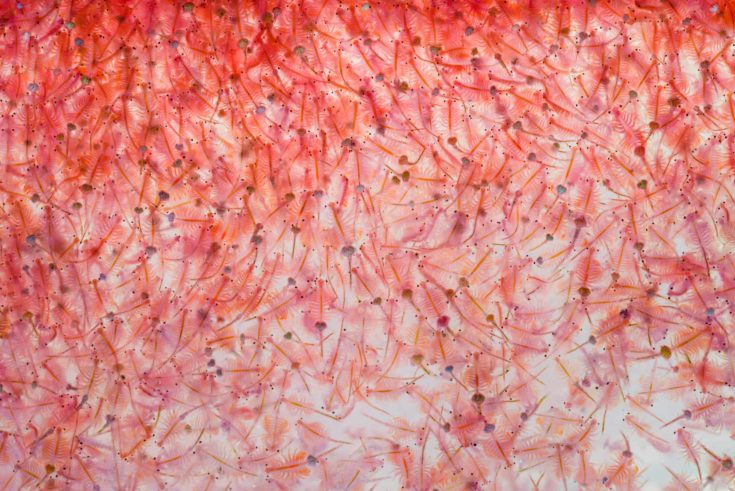
Live foods, including bloodworms, brine shrimp, and daphnia, are all popular choices, and bettas love them. However, make sure that you only buy live food from a reputable supplier, as the food could contain parasites or diseases that could harm your betta. Never feed live food that you caught yourself.
Parasites and disease are usually present in the water that contains the live food. So, one way around the problem is to strain the food through a fine sieve or a piece of muslin cloth, and then rinsing the food with some tank water before feeding it to your betta.
Another solution, if you have the time and suitable space, is to raise your own live betta food at home, using a nursery kit. That way, you know exactly where the food has come from, and you can be confident that it contains no nasties that could harm your betta.
How To Raise Your Own Live Betta Food
Brine shrimp are the easiest live betta food to raise yourself at home. To do so, you’ll need a hatchery. Here’s a quick summary of what you’ll need to do.
- First, place the hatchery into your tank so that it fills with water.
- Attach the hatchery to the tank wall with the suction cups provided so that it’s perpendicular to the tank bottom and the water level indicator is aligned with the water surface.
- Add a few small spoons of brine shrimp eggs, using the measuring spoon provided.
- Switch on the air pump, and adjust it so that a few small bubbles are generated every second. Don’t have the pump running too vigorously or you risk pushing the eggs out into the tank.
- Given the right conditions, the eggs will hatch out within 24 to 36 hours. Once the eggs have hatched, you can turn off the pump.
- Use a light positioned above the tank to draw the shrimp larvae to the light and to the dispersing port. The baby brine shrimp will swim through the port and out into your tank, where your betta will gobble them up.
Frozen Food
Frozen foods provide a convenient and safer alternative to live food. Frozen food comes in packs of small cubes. Take one cube and thaw it in some tank water before feeding it to your betta.
The main drawback of using frozen food is that it quickly sinks once you introduce it to the tank. So, I find using my fingers or an eye-dropper to feed the fish works best. Feed a few drops of frozen food at a time, adding more when your betta has eaten up.
Top 6 Betta Food Reviews
Here are some of my favorite betta foods. All these products are of high-quality and are suitable for a betta fish’s nutritional needs.
1. Omega One Freeze-Dried Tubifex Worms Freshwater & Marine Fish Treat

- Type: Freeze-dried worms
- Protein (min): 52%
Betta fish need a high-protein food with plenty of meat content, and these freeze-dried tubifex worms deliver that, containing 52% protein.
These treats are perfect for fussy feeders and can be given to both marine and freshwater fish. You can split the cubes of food into smaller portions or stick the cube to the side of the tank to enjoy a fantastic view of your fish tucking into this appetizing, nutritious snack.
Pros
- High-quality, freeze-dried protein source
- Can be broken into smaller pieces to suit your betta
- Contains added vitamins and minerals
Cons
- Quite expensive
2. Omega One Betta Buffet Flakes

- Type: Flakes
- Protein (min): 43%
Made in the U.S., using sustainable Alaskan seafood, including salmon, shrimp, and herring for superior quality meat protein, Omega One Betta Buffet Flakes are packed with all the nutrients that your betta fish needs.
Pros
- Made using wild salmon that’s rich in natural beta carotenes for extreme color enhancement.
- Contains 43% protein, together with fat and fiber.
- Insoluble in water, so your tank won’t become polluted.
- Flakes have less starch than other foods, helping to reduce fish waste.
Cons
- None
3. Omega One Freeze-Dried Bloodworms

- Type: Freeze-dried worms
- Protein (min): 55%
Betta fish need plenty of meaty protein in their diet, and these freeze-dried bloodworms are ideal, containing 55% protein.
The cubes of compressed, dried worms can be broken up into smaller pieces or stuck to the side of your betta’s tank so that he can help himself.
Pros
- High-quality, freeze-dried protein source
- Can be broken into smaller pieces for easy feeding
- Contains extra vitamins and minerals
Cons
- Quite expensive
4. Cobalt Pellets Floating Betta Fish Food

- Type: Pellet food
- Protein (min): 41%
These special floating mini pellets are ideal for bettas, containing 41% protein and whole fish products at the forefront of the ingredients list.
The 100% natural food is formulated to give your betta a well-rounded diet for superior appearance and excellent health. Your pet will also enjoy the benefit of added probiotics and prebiotics to keep his immune system and delicate digestion healthy.
Pros
- High-quality, well-balanced food
- Tiny floating pellets are ideal for surface feeding bettas
- Contains probiotics and prebiotics
Cons
- Quite expensive
5. Omega One Freeze-Dried Brine Shrimp Freshwater & Marine Fish Treat

- Type: Freeze-dried foods
- Protein (min): 48%
Betta fish love brine shrimp! But if you don’t fancy the idea of maintaining a hatchery, these freeze-dried brine shrimp are the next best thing for your betta buddy.
The shrimp are processed to lock in valuable nutrition and taste, making this the perfect treat for picky eaters. The shrimp food contains 48% crude protein to promote healthy growth and boost your beautiful betta’s colors, too.
Pros
- High-quality, freeze-dried protein source
- Perfect high-protein betta treat
- Color-boosting
Cons
- Crumbles to a powder, which can be difficult for your fish to eat
6. Tetra TetraPro Betta Crisps

- Type: Pellet food
- Protein (min): 44%
These high-quality floating pellets are perfect for your surface-feeding betta fish. Unlike flake foods, these pellets are carefully formulated to float longer on the surface so that your betta has plenty of time to enjoy his meal. That also means less waste and cleaner water.
The appetizing crisps are super-tasty, tempting even the fussiest feeder to tuck in! This nutritionally balanced food includes a natural additive to boost your betta’s bright colors, making your fishy friend appear even more vibrant.
Pros
- Contains 44% crude protein
- High-quality, floating pellets perfect for surface feeders
- Perfect high-protein betta food
- Contains natural color-boosting additives
Cons
- Quite expensive
Conclusion
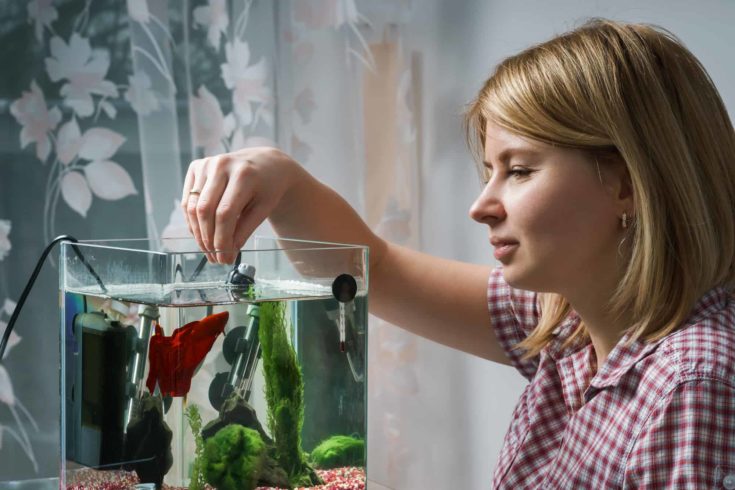
I hope you found my overview of the optimal diet for your betta buddy helpful and informative.
Now, it’s time for me to choose my favorite betta food!
And the winner is … Omega One Betta Buffet Flakes!
I love that this product is made using only natural, sustainable protein sources, contains no fillers or meal and enhances your betta’s colors without the use of artificial additives. The formula is well-balanced, containing everything that your fish needs to thrive.
Despite all that, this product is typically cheaper than other similar fish foods. Also, Omega One makes the food in pellet form, and they also produce freeze-dried bloodworms as betta fish treats.
